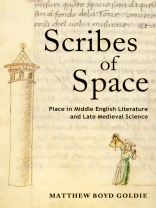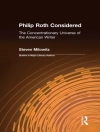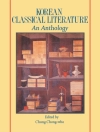Scribes of Space posits that the conception of space—the everyday physical areas we perceive and through which we move—underwent critical transformations between the thirteenth and fifteenth centuries . Matthew Boyd Goldie examines how natural philosophers, theologians, poets, and other thinkers in late medieval Britain altered the ideas about geographical space they inherited from the ancient world.
In tracing the causes and nature of these developments, and how geographical space was consequently understood, Goldie focuses on the intersection of medieval science, theology, and literature, deftly bringing a wide range of writings—scientific works by Nicole Oresme, Jean Buridan, the Merton School of Oxford Calculators, and Thomas Bradwardine; spiritual, poetic, and travel writings by John Lydgate, Robert Henryson, Margery Kempe, the Mandeville author, and Geoffrey Chaucer—into conversation. This pairing of physics and literature uncovers how the understanding of spatial boundaries, locality, elevation, motion, and proximity shifted across time, signaling the emergence of a new spatial imagination during this era.
Зміст
List of Illustrations
Acknowledgments
Introduction: Late Medieval Space
1. Local Space, Edges, and Contents: Chorography and Late Medieval English Maps
2. Local Literature: Vernacular Local Space and John Lydgate’s Siege of Thebes
3. Horizonal Space: Measuring Local Area with Astrolabes, Quadrants, and Topographia
4. Horizonal and Abstracted Spaces: The Book of Margery Kempe and The Book of Sir John Mandeville
5. The Science of Motion: New Ideas of Impetus and Measurement
6. Motion in Literature: Place and Movement in The House of Fame
7. Intense Proximate Affect: Nicole Oresme’s Tractatus de configurationibus qualitatum et motuum
8. Proximal Literature: Nearness and Distinction in the Legend of Good Women
Afterword: Ubiquitous Being in the Pardoner’s Prologue and Tale
Notes
Bibliography
Index
Про автора
Matthew Boyd Goldie is Professor of English at Rider University, a founding member of MAPS: The Medieval Association of Place and Space, and author of The Idea of the Antipodes.












